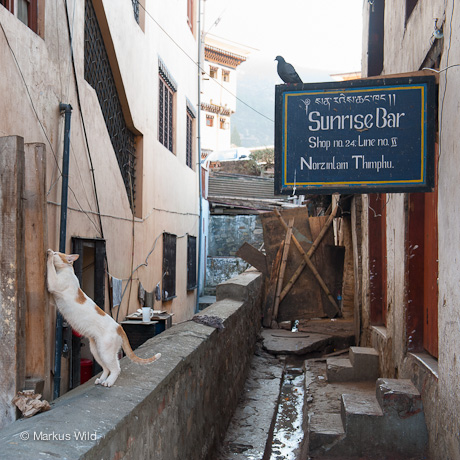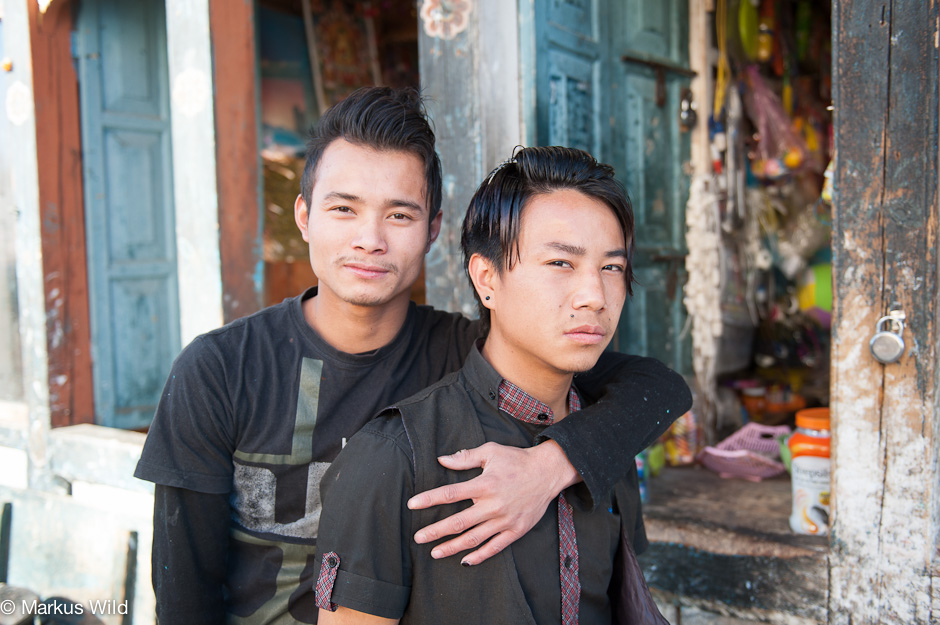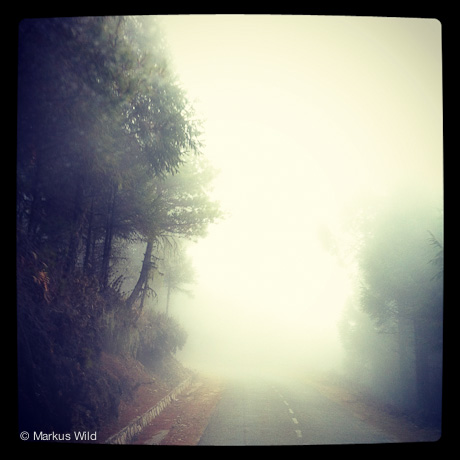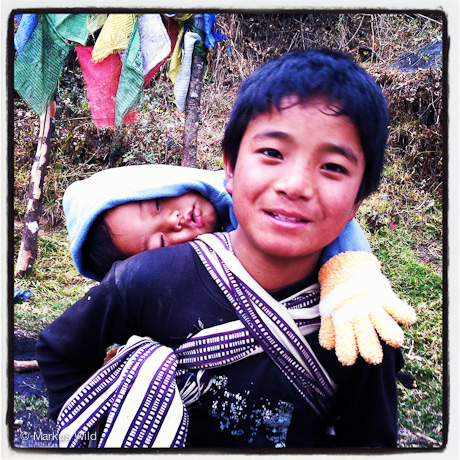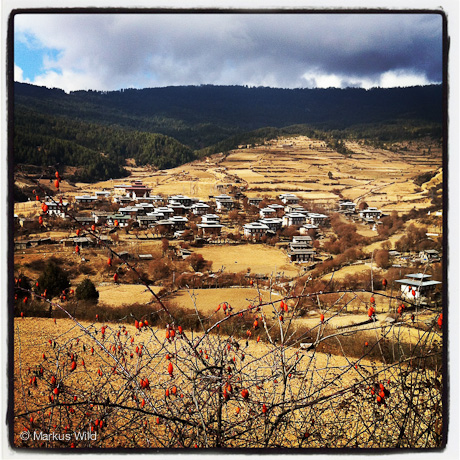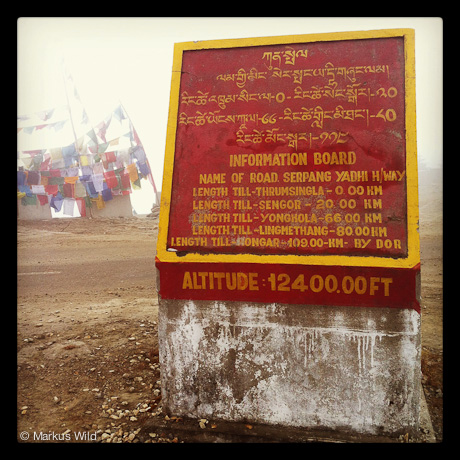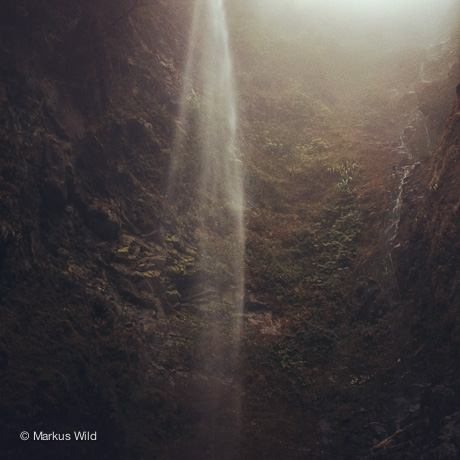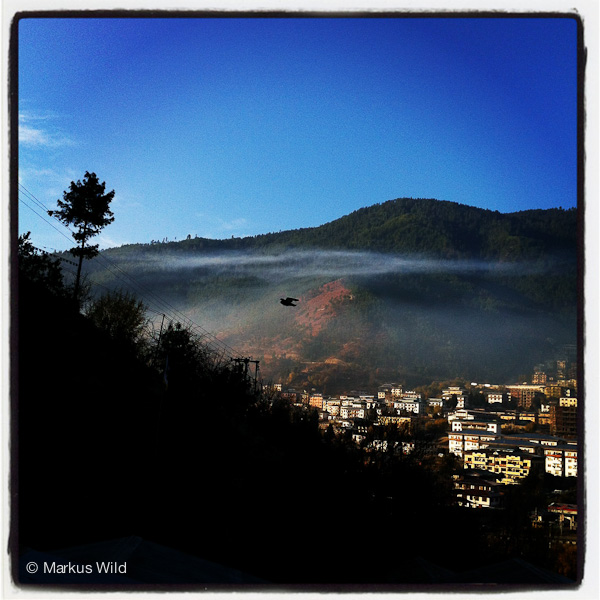Baccio -a Swiss friend of mine- is a very experienced solo traveller who has been travelling the world extensively in his very own individual way: he is open minded, flexible and adventurous. He likes to invest time to really getting himself into new places and situations in order to let encounters and first hand experiences become possible. With this attitude he has always met very good people and made friends wherever he goes.
So I was happy when Baccio asked me for advice about travelling in Bhutan and -if possible- for individual guidance.
I suggested Baccio to make a west-east crossing of the country including a trekking to the remote villages of Merak and Sakten in the far east. All together we would be in the country for 24 days. I wanted to introduce him to “my Bhutan” and to have memorable encounters and experiences with the help of some of my friends; at the same time I wanted to explore -together with him- new areas: although I have been working in Bhutan for 10 years now and have been fortunate to visit most of the 20 dzongkhags (districts), I haven’t reached further east than Mongar so far.
Tshering Zam, one of my best and longtime friends in Bhutan, organised everything perfectly with her travel agency. And she accompanied us on our journey with heartfelt dedication and care; with her beautiful, lively and natural presence, and her genuine interest in people and culture she is always able to open up doors and hearts easily.
Baccio and me started our adventure in Zurich on Sept 29, flying via Dubai to Kathmandu, where my friend Kay was receving us at the airport. We stayed two nights in beautiful Rokpa Guesthouse, hearing the charming sounds of nearby Shechen Monastery in Boudha (very close to the big stupa that now has to be renovated after the big earth quake in April of this year). We had a very interesting and intense day with Kay showing us around in “his Kathmandu”.
And in Shechen Monastery I met a young monk again: Dokya Tulku. I met Dokya for the first time in Bhutan in 2005 when he was still a boy, living and studying together with another monk as a fellow of Yangsi Khyentshe Rinpoche. Dokya Tulku is now 23-years old and will soon finish his studies to become a teacher in Buddhist philosophy. He offered me to meet and guide me and possible fellow travellers through Shechen Monastery, whenever I will come back to Kathmandu.
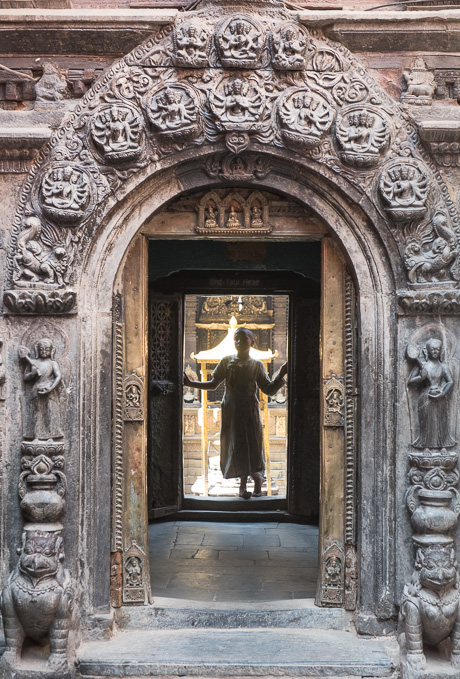
At the entrance of the Golden Temple (Kwa Bahal) in Kathmandu
After a marvellous flight with an extraordinarily clear sight on the Himalayan range (including Mount Everest) we landed safely in Paro; the landing in Paro is always such an exciting and beautiful experience, since the pilots have to fly around various mountains and crossing different hills on their way down towards the runway in Paro! .
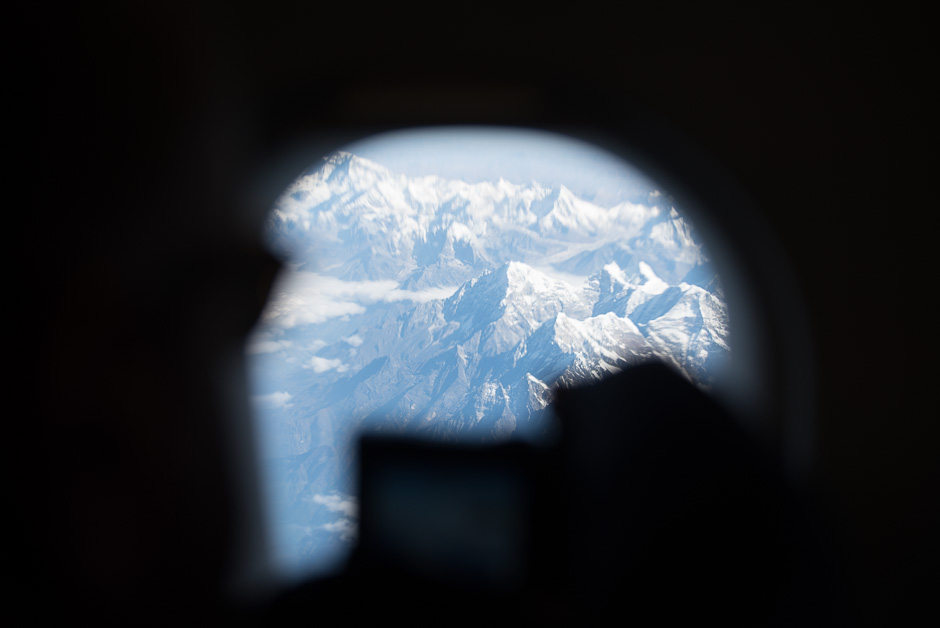
Tshering picked us up at the airport and took us after a first yummy Bhutanese lunch in town to Sangchokor Buddhist Institute, one of her favourite monasteries high above Paro. She has been connected to this monastery since long time by having done a lot of volunteering work and she is even related to the rinpoche who is the abbot here. On the way back to town we visited the traditional farmhouse of one of Tshering’s relatives and we could drink a toast to our happy arrival and first day in Bhutan with a homemade “ara”, a local brandy and Bhutanese speciality, drunk warmly, prepared with butter and egg.
The next day we started with one of the highlights of each Bhutan-tour that most visitors often get only towards the end of their journey: a walk up and visit of spectacular and holy Taktsang Monastery (“Tigernest”).

Tshering and Baccio in front of the Tigernest
Naturally, during our 24 days and nights travelling from West to East Bhutan we came across many wonderful encounters and experiences and -almost normal in Bhutan- various unexpected and unplanned ones too.
Among other things we were invited by a yak herder family into their temporary hut for tasting fresh yak milk and cheese, and by a monk into his monastic cell for tea and biscuits, we became part of a topping-out ceremony in Merak village, and a nightly ceremony in honour of a local deity in Sakten.
These were the stations on our 24-days tour from West to East Bhutan:
Paro (Sangchokor Buddhist Institute and Taktsang Monastery) – Thimphu (meeting people, institutions, interesting places..) and surrounding (Cheri Monastery) – Dochu La Pass (Druk Wangyal Lhakhang Temple) – Chimi Lhakhang (the temple of the “Divine Madman” Drukpa Kuenley) – Punakha (visits of Punakha Dzong and Khamsum Yulley Namgyal Chorten) – Phobjikha Valley (staying in a farmhouse homestay and visiting of the local Primary School) – Gangtay Village and Monastery – Trongsa (Trongsa Dzong and Tower of Trongsa Museum) – Pele La Pass – Chumey (Yathra production – best woolen products in Bhutan) – Jakar/Bumthang (religious sites, Swiss-Bhutan cooperation institutions) – Ogyen Choling Palace and Guest House in Tang Valley – Natural trail from Tang Valley back to Jakar (visiting a nunnery on the way) – Thrumshing La Pass – Mongar – Trashigang – 7-days trekking to Merak and Sakten villages (meeting the semi-nomadic people living there) – Tshechu (a religious festival) in Khaling – Samdrup Jongkhar – Guhawati (India)
Below some more photos with captions from our journey:
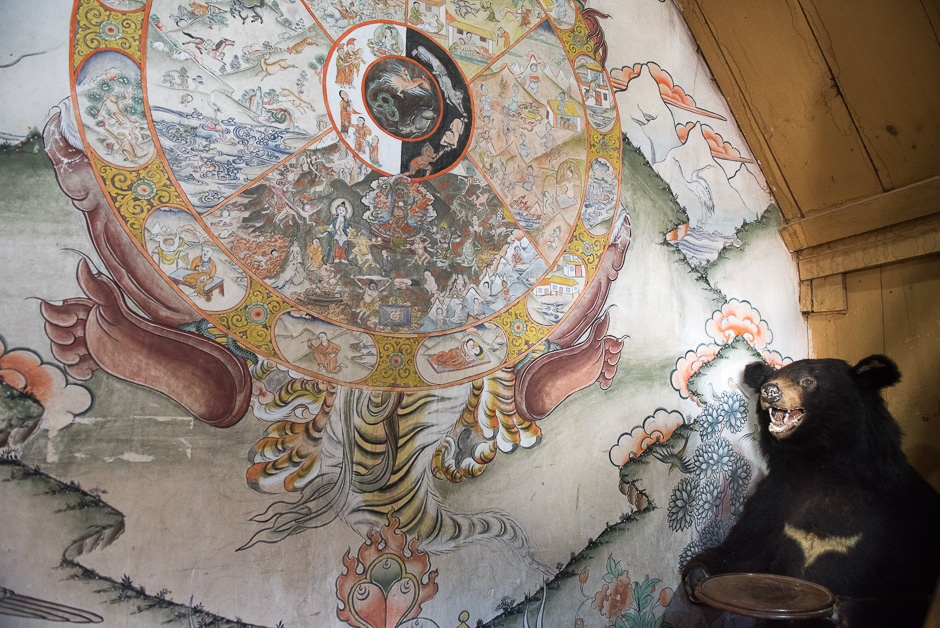
Inside Sangchokor Buddhist Institute high above Paro

On Dochu La Pass you can use a powerful binocular telescope to watch some of the highest peaks on earth: Masang Gang (7165m), Gangkhar Puensum (7541m), and Kulha Gangri (7554m). And you can also detect Gasa Dzong, a small white speck almost 50km to the north.
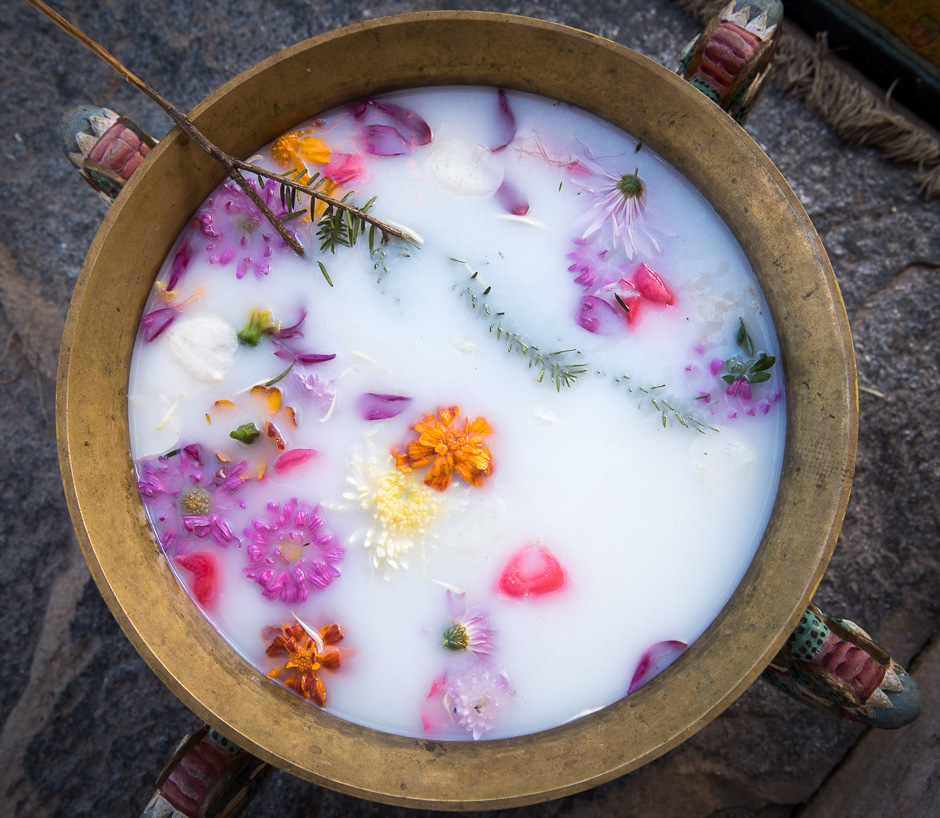
A bowl with milk and flowers at the entrance of Druk Wangyal Lhakhang on Dochu La Pass.

Inside the rice fields, on the beautiful way up to the Khamsum Yulley Namgyal Chorten, a four-storied new temple containing elaborate Buddhist paintings and scultpures

A monk at Chimi Lhakhang, the temple of the “Divine Madman” Drukpa Kuenley near Punakha.
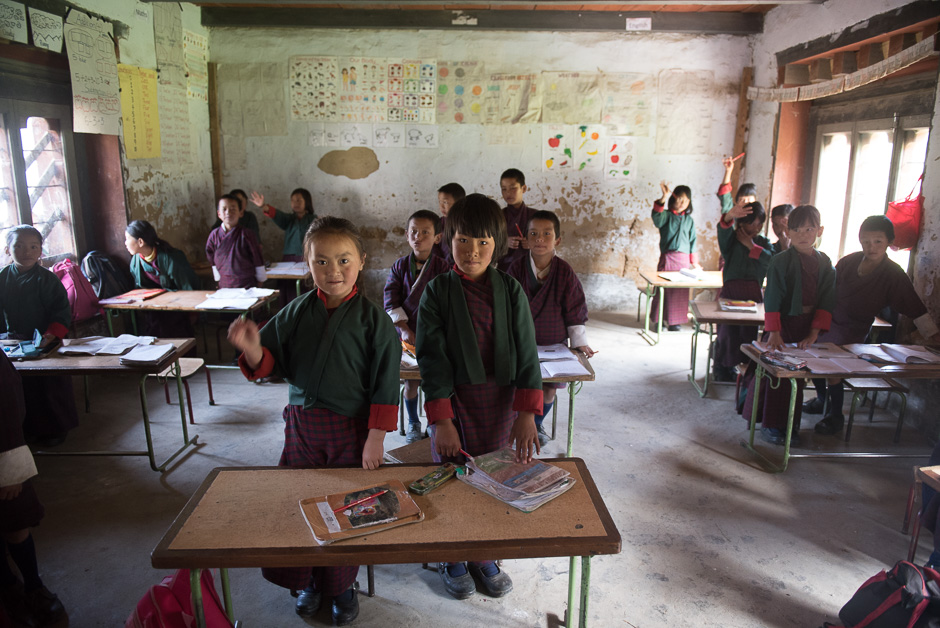
Primary School in Phobjikha Valley
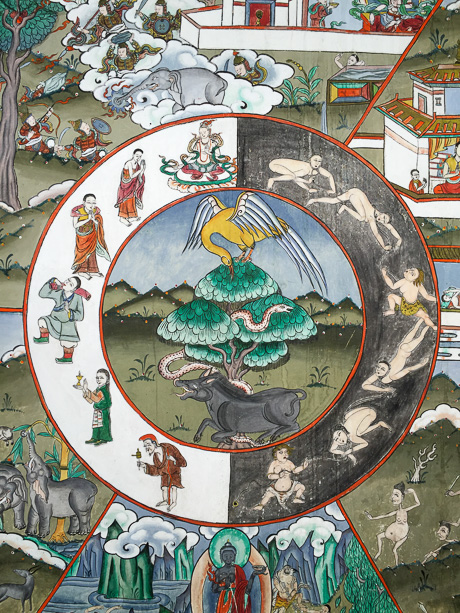
Mural painting inside Trongsa Dzong
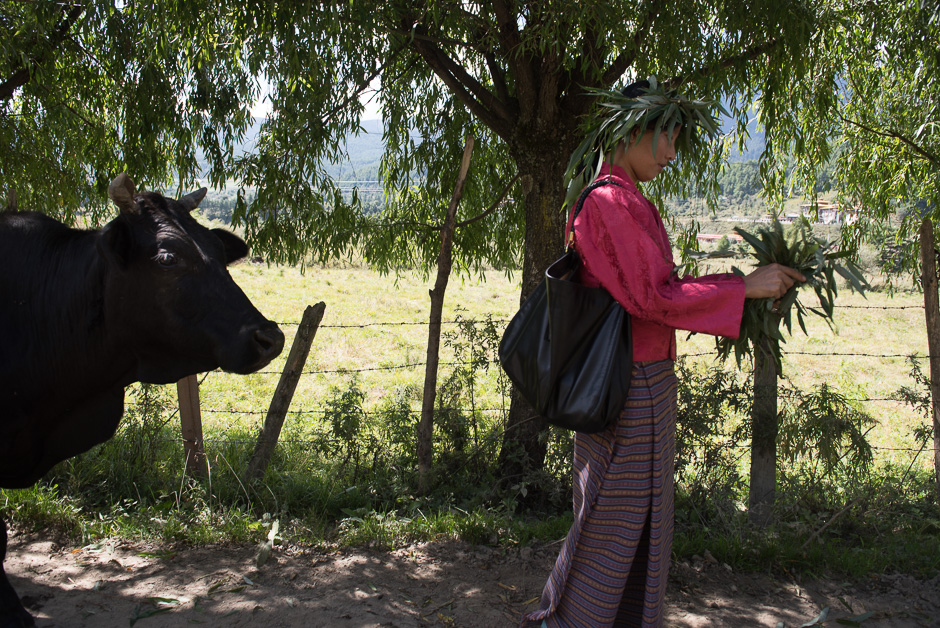
Tshering Zam making traditional sun hats out of local plants (followed by a cow who saw the plants as food and not as hats)
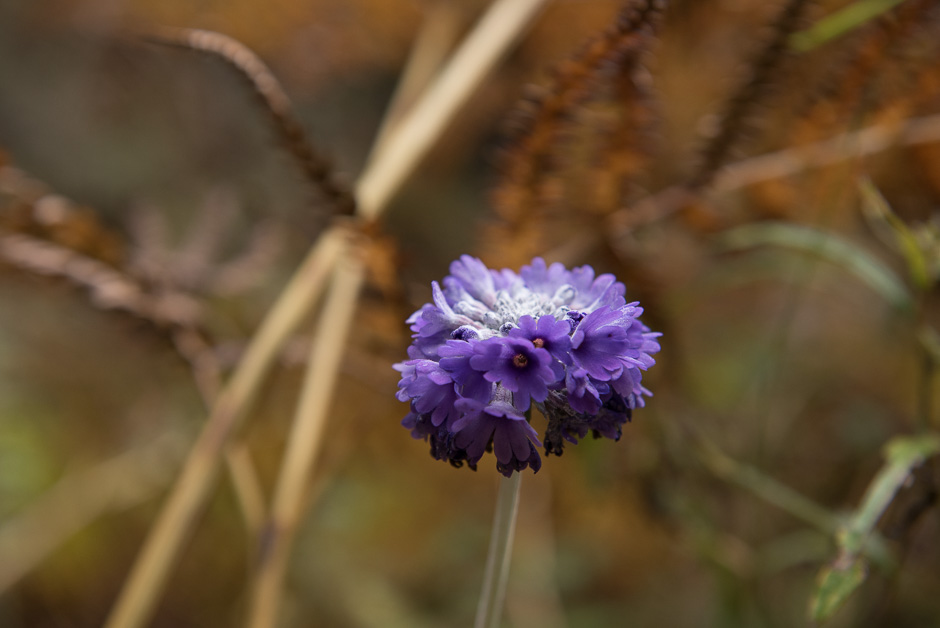
Flowers on a trail from Tang Valley to Jakar (Bumthang)
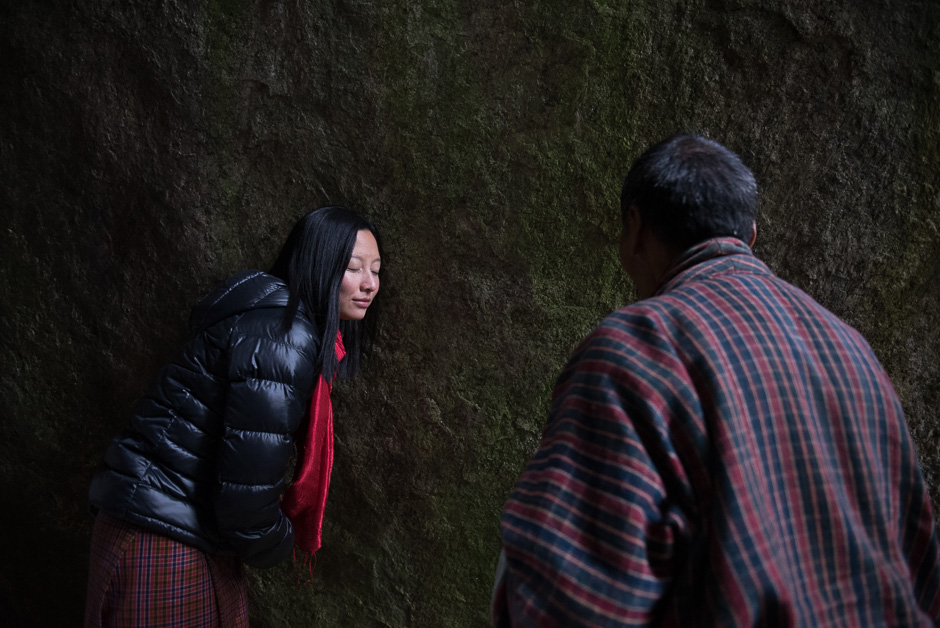
Listening to voices inside a rock behind Ta Rimochen Lhakhang, Tang Valley
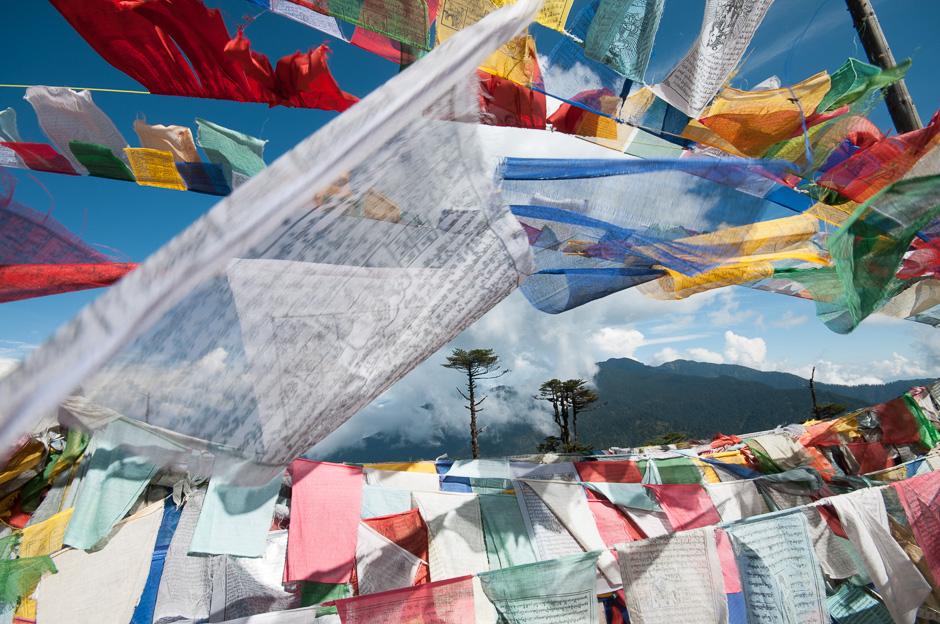
On Trumshing La Pass
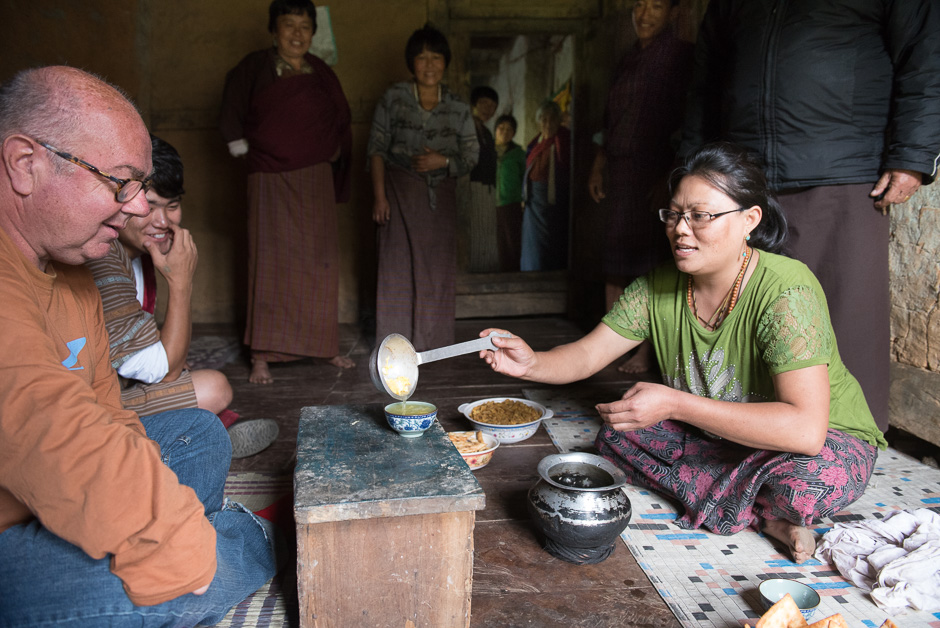
Invitation into a private home near Mongar
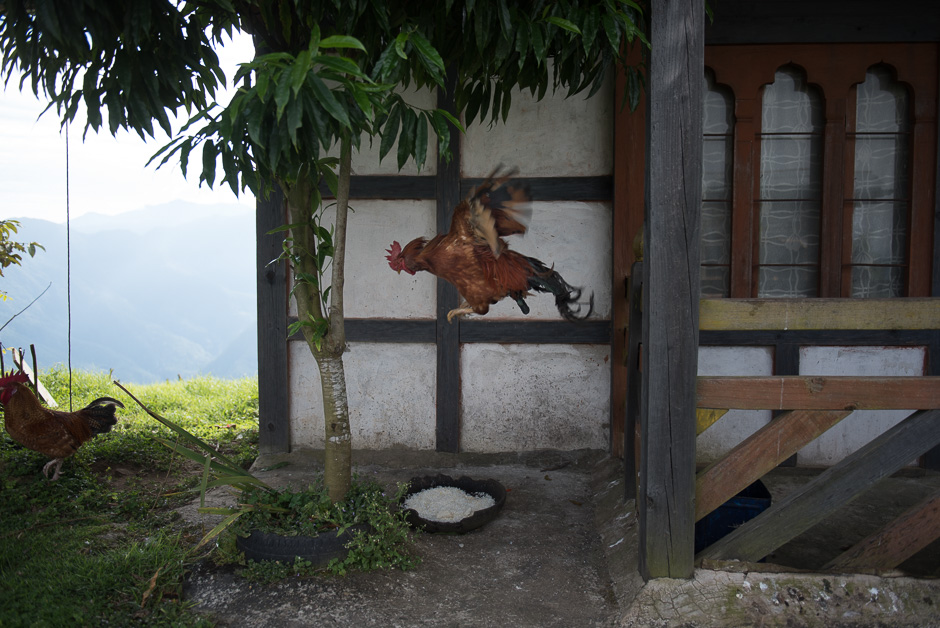
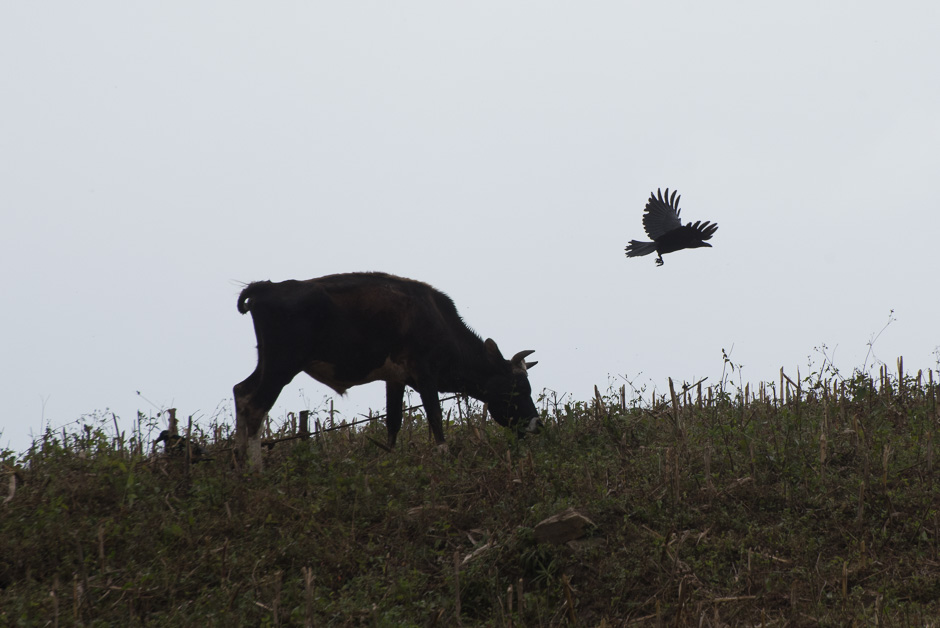
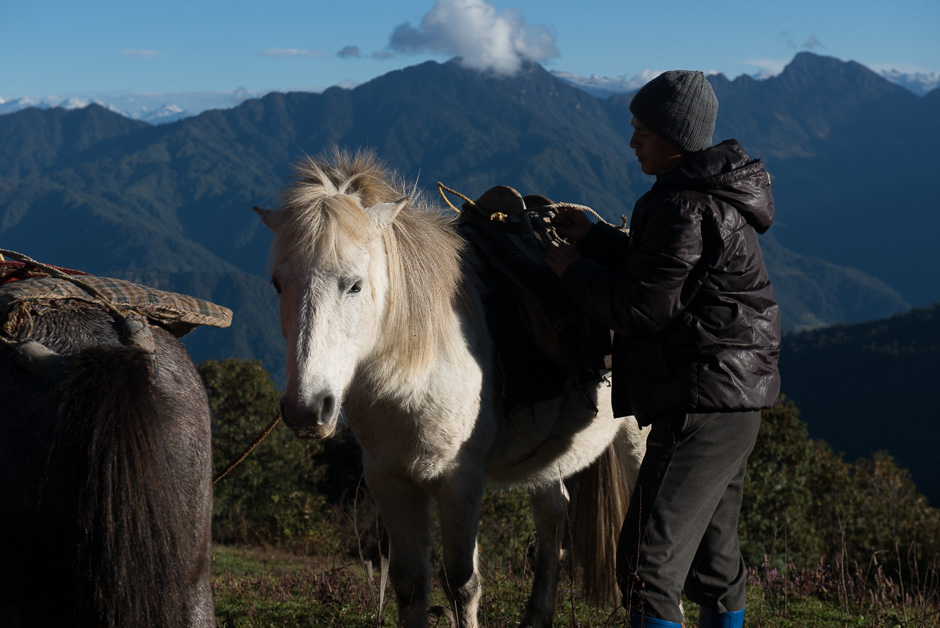
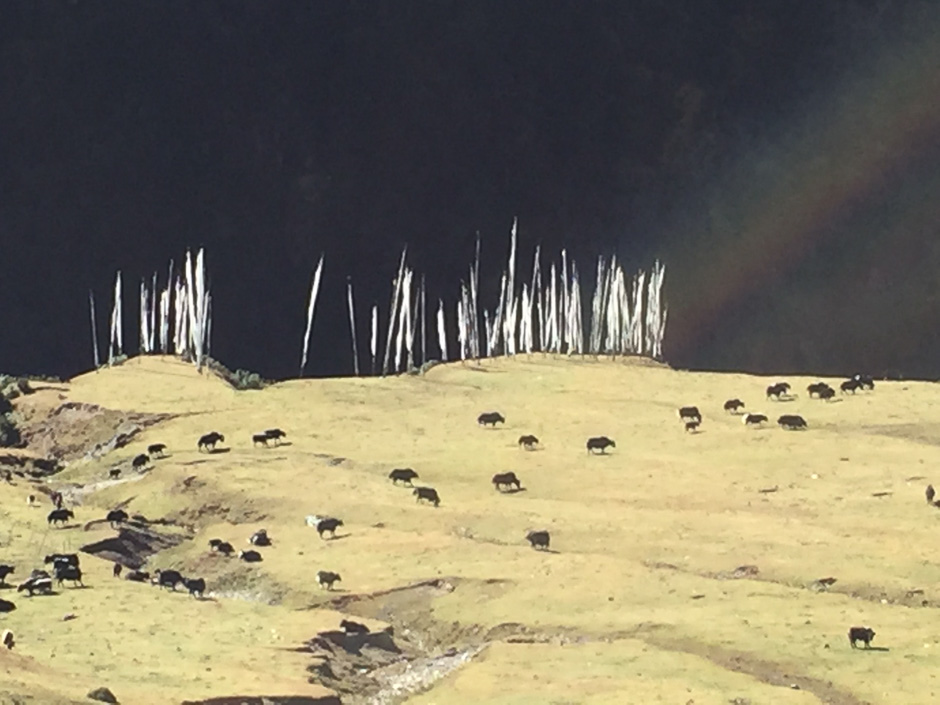
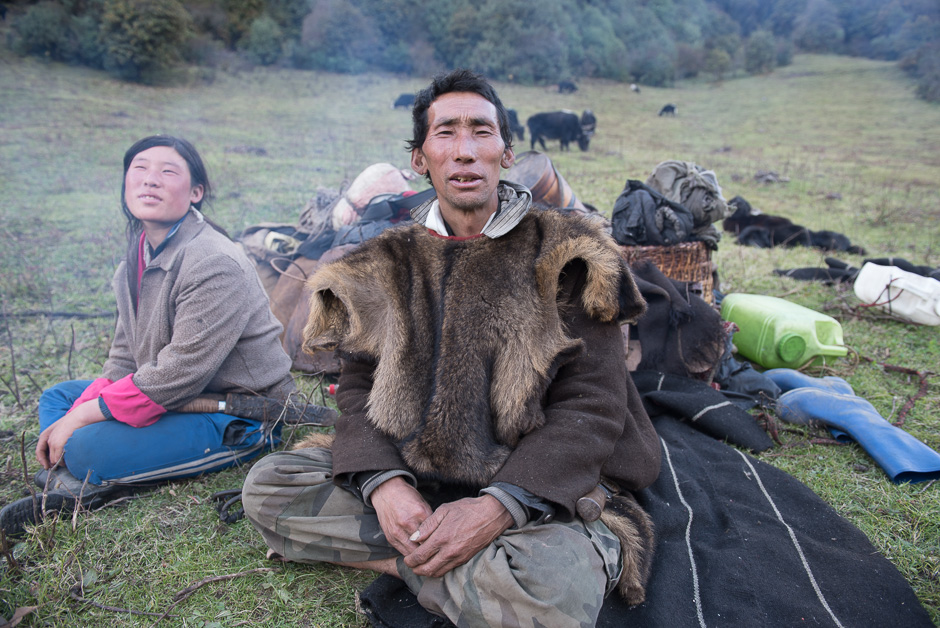
Yak herders in between Merak and Sakten
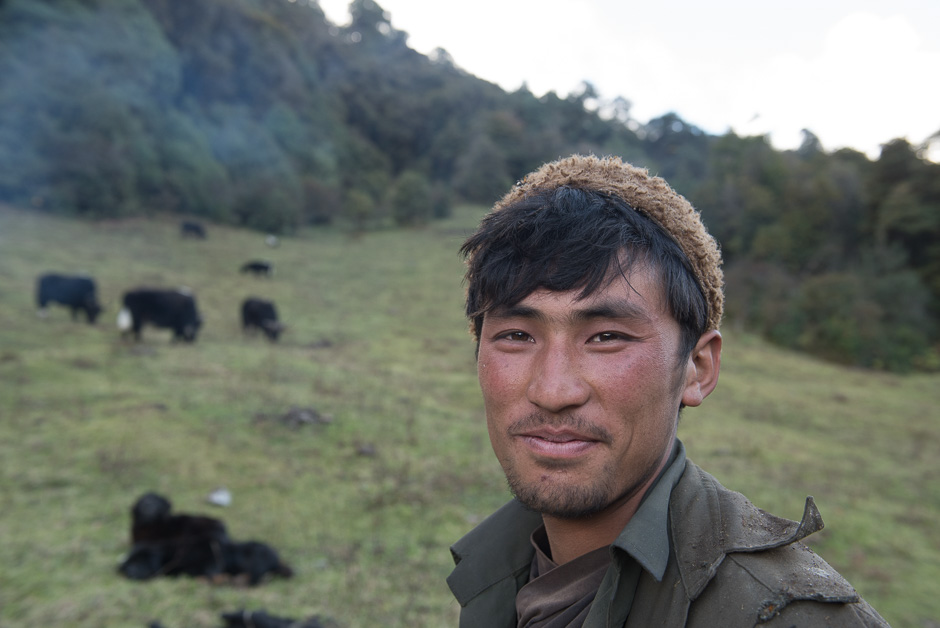
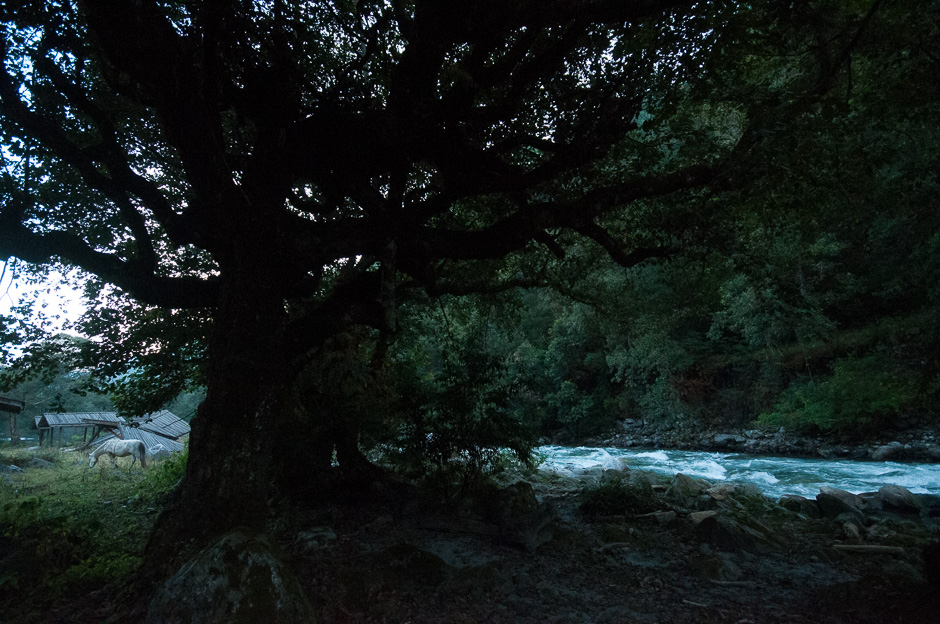

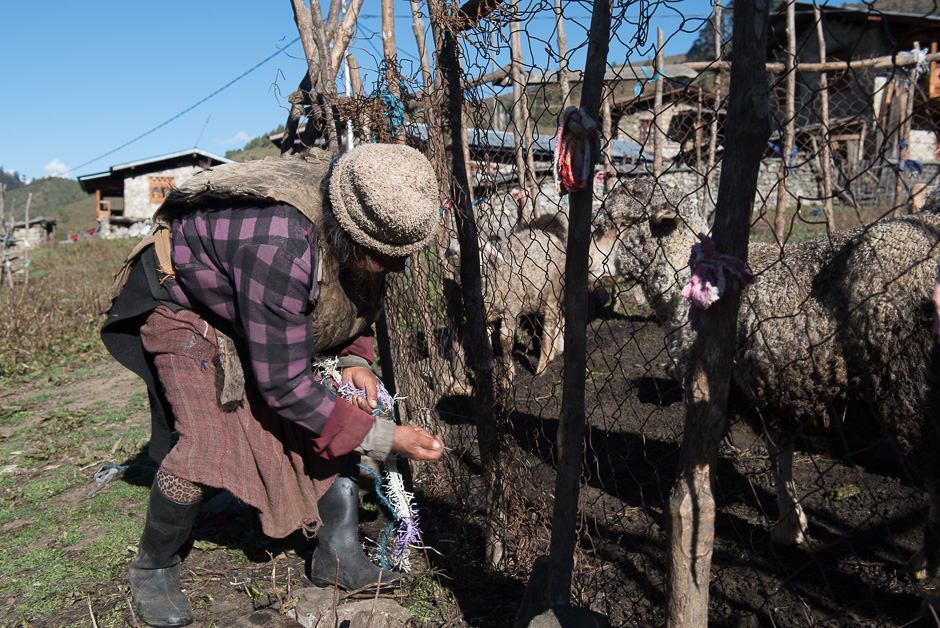
A farmer with her sheep in Sakten

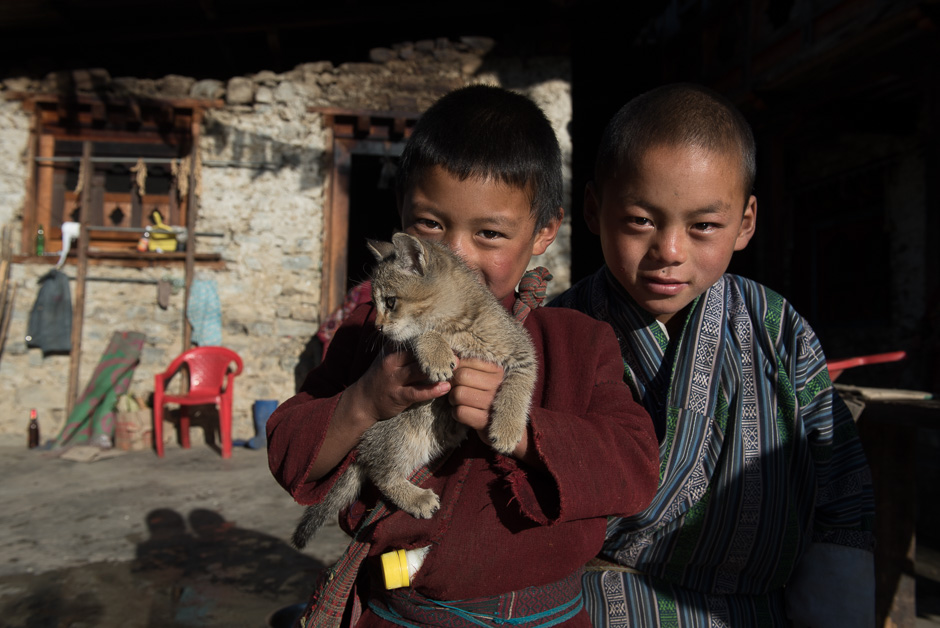
Before going to school (Sakten)
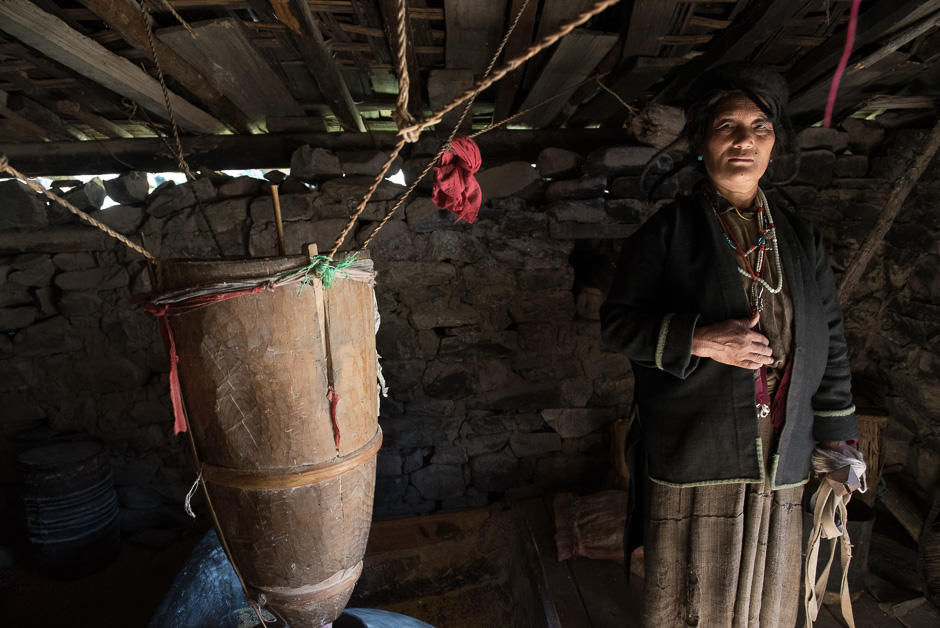
Grinding cereal with a traditional water mill (Sakten)
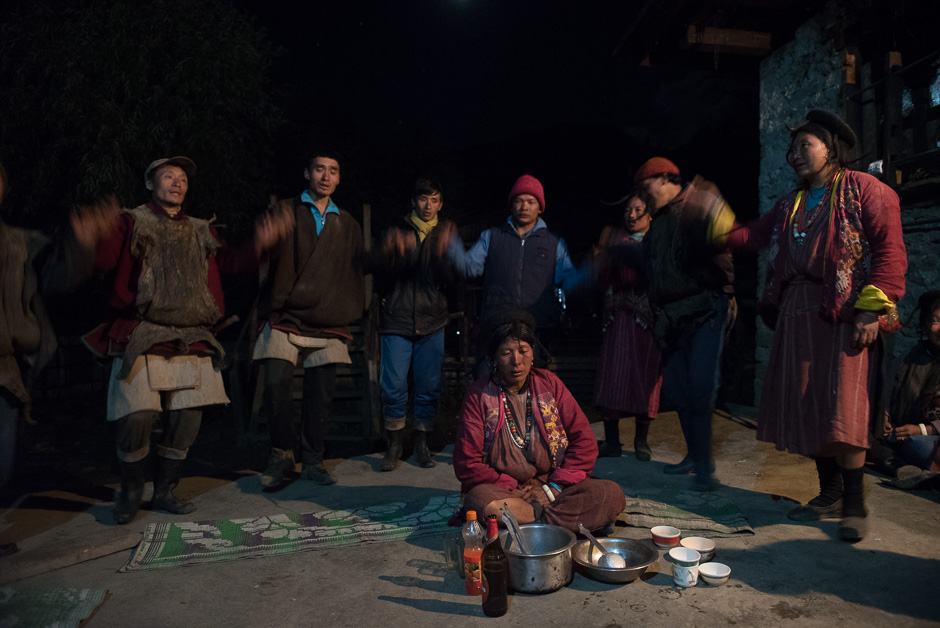
Ceremonial dances for a local deity in Sakten

Running towards the festival ground (Tshechu in Khaling, Trashigang)
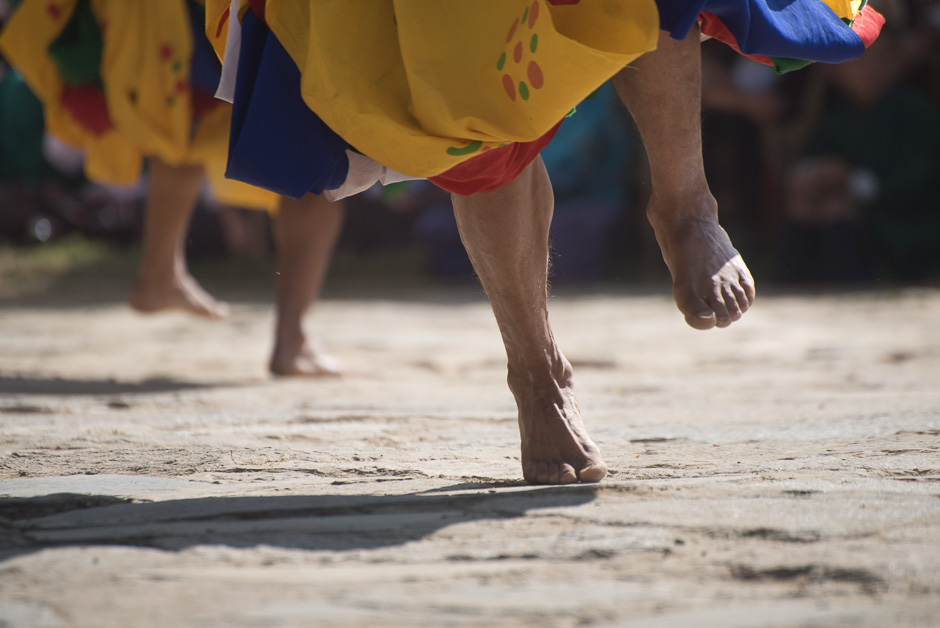
Tshechu dancers
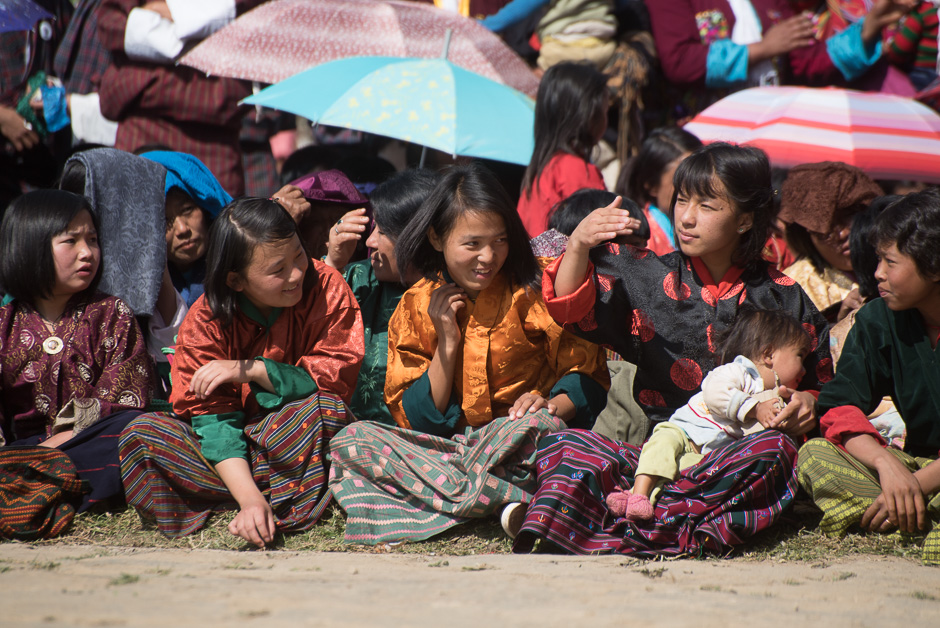
At the Tshechu in Khaling, Trashigang
Our photo book of the LCD (Leveraging and Preserving Bhutan’s Cultural Diversity) Project is available now! It contains 170 pages, 376 photos and much written information on life and culture in four remote communities of Bhutan. Most of the photos are taken by students and NFE learners who took part in the Participatory Photo Documentation Project that I conducted in the four communities of Ngalatrong, Kengkhar, Lumbey and Lotokuchu. The book is available in Bhutan via Shejun Agency, Thimphu (telephone +975-77493719/email contact@shejun.org) and in Europe via Markus Wild, Luzern, Switzerland (mobile +41 79 517 96 77 / email info@markuswild.ch)
Im deutschen Monatsmagazin “Natur” („Natur – das Magazin für Natur, Umwelt und besseres Leben“) ist unter dem Titel “Im Land des Donnerdrachen” ein 9-seitiger Artikel mit Interview und vielen Fotos über meine Arbeit mit dem Participatory Photo Documentation Project in Bhutan erschienen.
/
The German monthly magazine “Natur” (“Natur – the magazine about nature, environment and a better way of life”) has published an article including an interview and many photos about my work with the Participatory Photo Documentation Project in Bhutan.
Sie können diesen Artikel als pdf-Dokument downloaden / You can download this article (in German) as a pdf file:
Download
A wonderous and touching dialogue between a monk and a horse.
Phajoding Monastery, Bhutan, November 2, 2013.
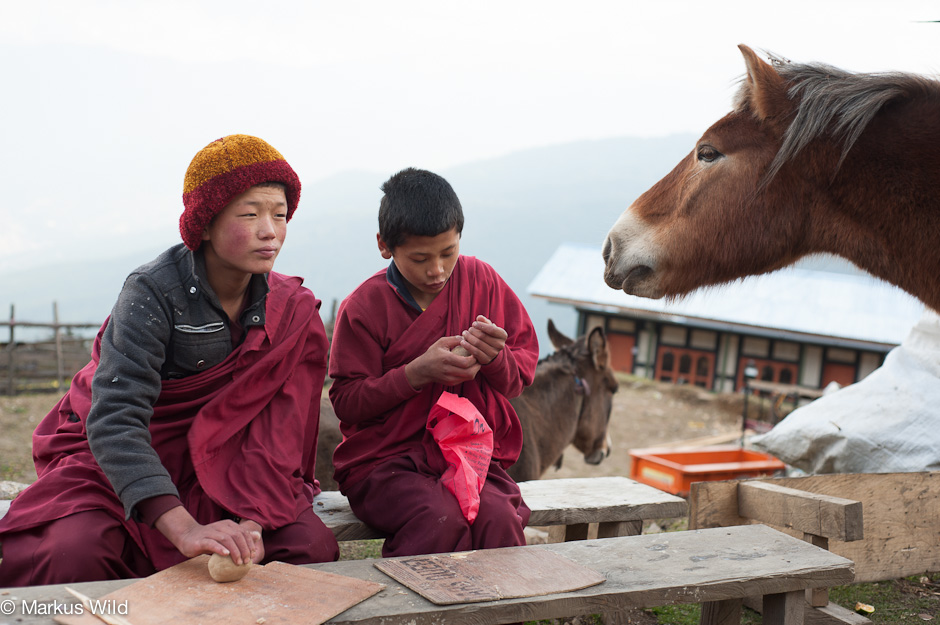
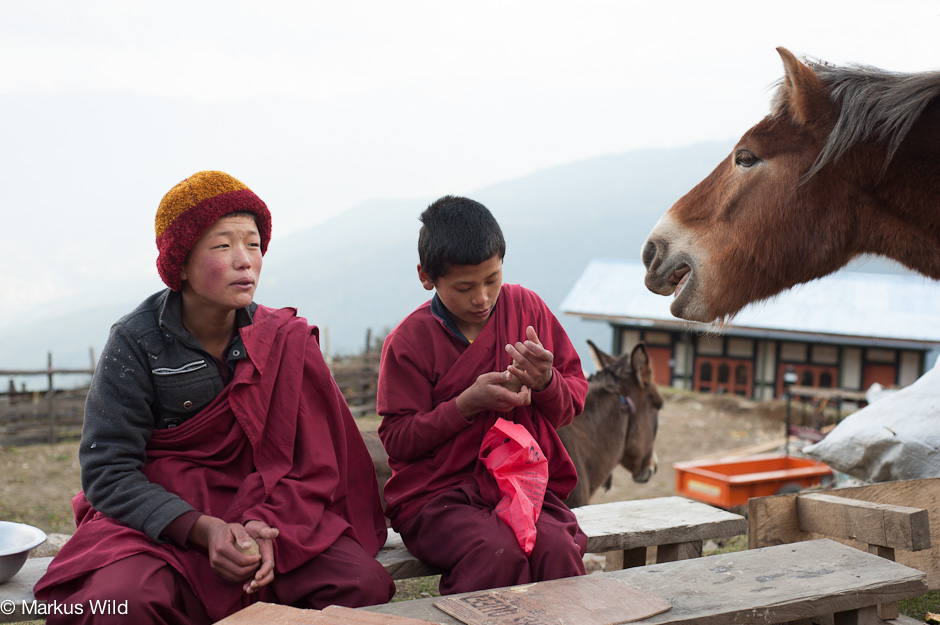
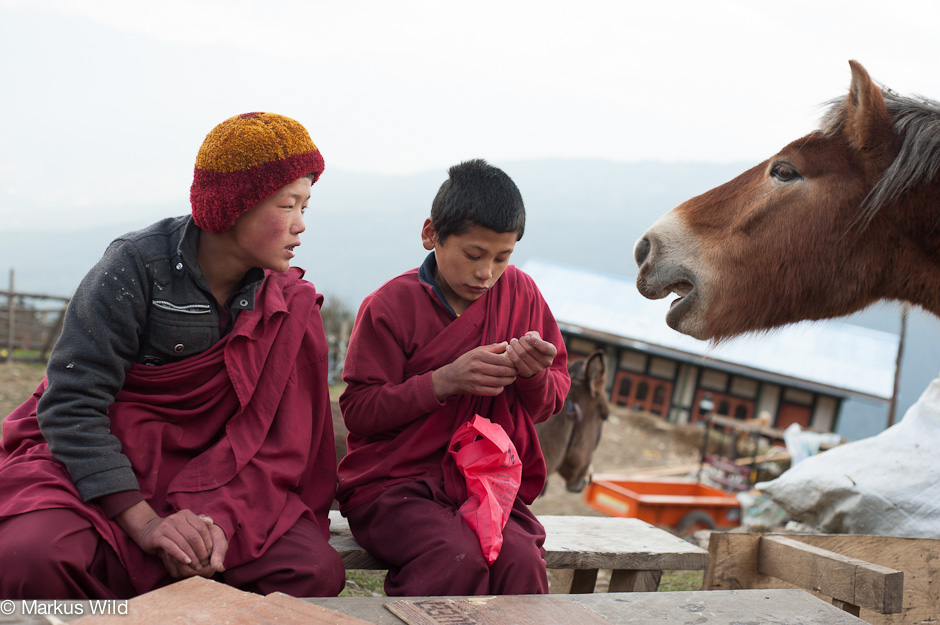
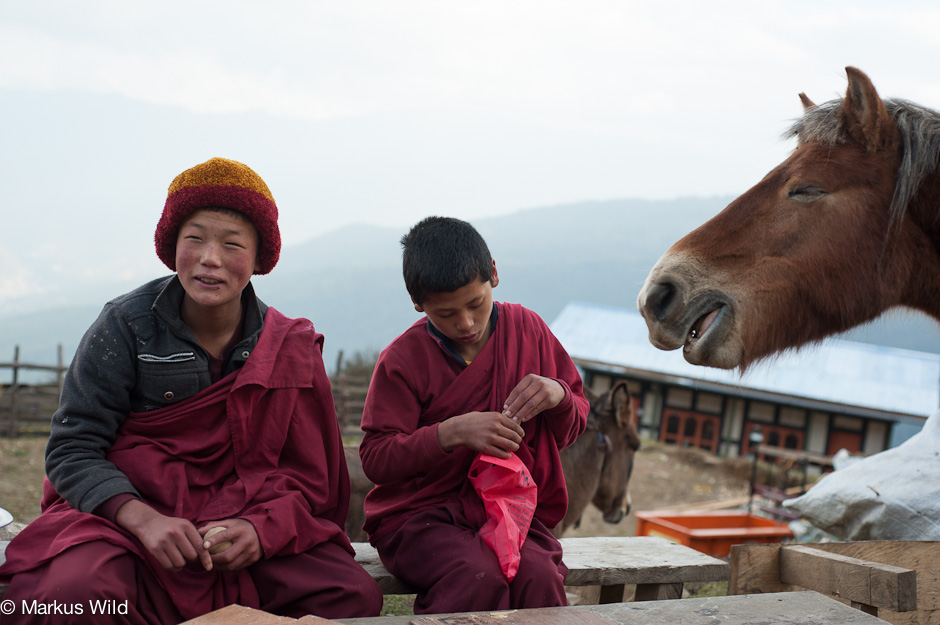
I’m back in Bhutan for one month. Beside working on final procedures with the Helvetas’ LCD Project (Leveraging and Preserving Bhutan’s Cultural Diversity Project) I am meeting different partners to discuss a proposal for follow up activities with my Participatory Photo Project.
During my spare time I use to meet old friends – and also make new ones. This is easy to do in Bhutan and to me this is one of the main reasons why I feel so much at home in this beautiful and fascinating country.
Here’s an example of what can grow out of a simple walk to town on an ordinary day:
Last Thursday evening when going to town I came by Mojo Park and met some old friends that I’ve known from long ago. Mojo Park is “the only place in Bhutan where I can get my dose of live music, alcohol, snacks and good people to meet and good people to hang out with” according to his owner Ganchu -who is also running Radio Valley, a private radio station. So Ganchu was there -on the terrace of his music club- with Tashi Gyelthsen, a Bhutanese film maker and poet and with Rajesh Gurung, a very talented painter and co-founder of VAST (Voluntary Artists’ Studio Thimphu) who was among the group that I was lucky to work with when I was first conducting workshops in digital photography in Thimphu, back in 2005. Now, 8 years later, Rajesh and his friends are taking me to the the floor above Mojo Park and introduce me to a new restaurant called “A la Carte”. It has opened just a few months ago and is run by a former cook at the five star Amankora hotel; I like the place because its very friendly and relaxed atmosphere and because they serve -surprisingly- some very excellent Thai food. So I surely will like to go by regularly in the near future. After having tasted some first example of the food (a delicious Pad Thai) and one (or two) chilled Bhutanese beer(s) we went down to Mojo Park again and enjoyed the talent of some young local musicians.

Mojo Park, late night jamming
After the closing hour we continued chatting outside, sitting on the terrace in front of the club. A friendly and charming young woman was offering me a piece of self-made chocolate cake that she was sharing with her friends; they were telling me that on coming Saturday they would go for a hike to Phajoding monastery and asked me if I would like to join them.
Although I have lived in Bhutan a great part of the last eight years and although I have visited many different lhakhangs (temples) all over the country, so far I have not yet reached Phajoding, a monastic complex of many temples and buildings, situated above Thimphu on an altitude between 3500 and 3900 meters above sea level.
So I agreed happily (since not all young people I meet in the city are still interested to walk up arduously through tense forests to remote monasteries)!
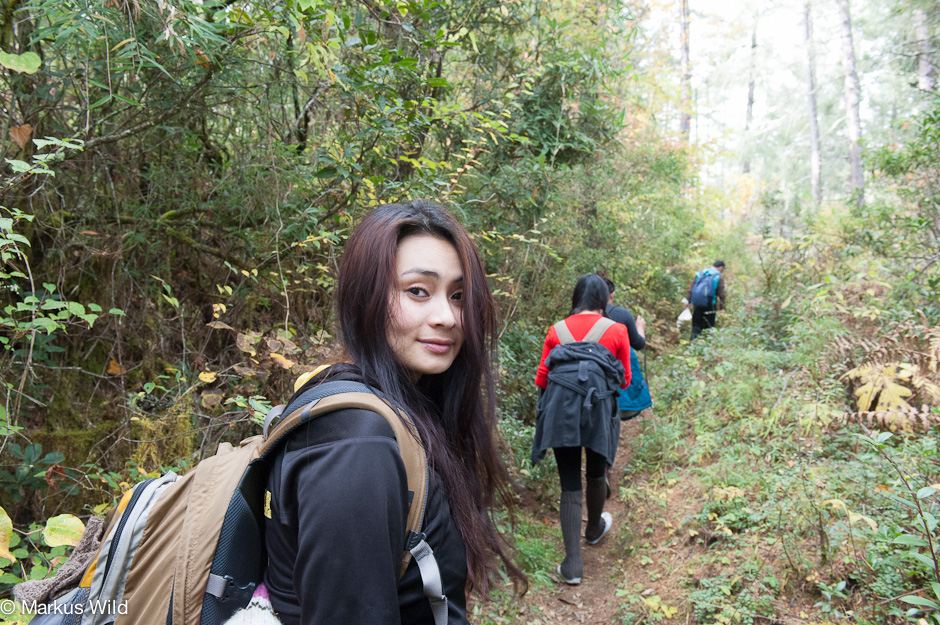
Some 30 hours later, on Saturday early morning, before 7 am, they picked me up at the arranged meeting point, and after a 15 minutes car ride (by a friendly uncle of one of my new friends) we reached the point where the road ends; we left soon behind us the thousands of prayer flags that are flattering around the radio tower where our hiking began. The path leads us through pristine forest with mystical looking trees, many of them now changed to warm autumn colours, across spots of pastures towards the monastery high above the capital. A kind and lovely stray dog seemed to have waited for us and accompanied us during the whole day, walking always nearby, behind or in front of us, waiting patiently outside while we were visiting each of the five temples; he was asking silently but clearly for some share, when we had red rice and ema datshi as our lunch (kindly prepared in the early morning by one of my friends). My contribution to the meal were a handful of Bhutanese mandarines and apples from the weekend market and some hazelnut chocolate brought along from Switzerland.
After the strengthening meal my friends changed their dress, putting on their traditional dress (called “kira” for women and “gho” for men); for Bhutanese it is mandatory to wear the traditional dress when visiting religious sites, schools or government offices and buildings.
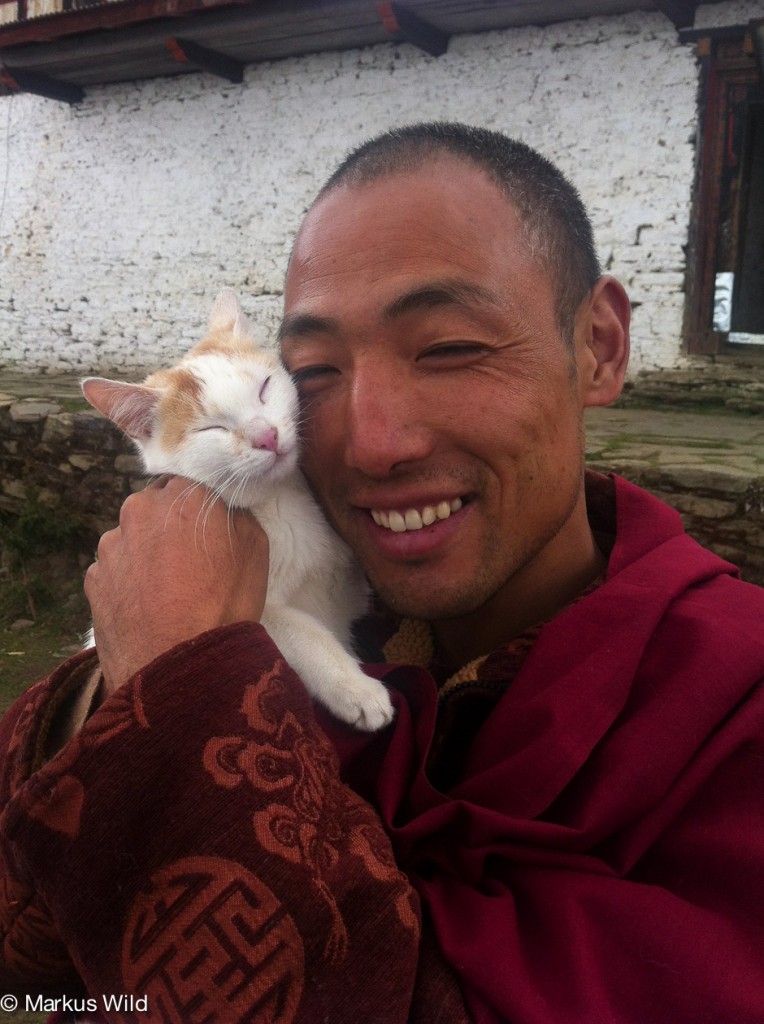
Lama Namgay Tenzing, the head teacher for 25 young monks studying at the Monastery
So we walked from one lhakhang to the next, climbing up till 3900 meters above sea level, on simple but good enough foot paths. Inside the temples we prostrate and pray and give offerings (butter for butter lamps, incense sticks and some smaller bank notes). In each place a monk would pouring out a hand full of holy water that we drink and that we apply on top of our heads.
I was always impressed and it made me feel comfortable and happy how people all over Bhutan would introduce me to their customs and believes and how they invite me to take part in their religious practises. It happened to me with people of different religious believes and practises, Buddhists and Hindus, and also people who still follow animistic believes and practises; it always made me feel that I am not a stranger to them but a friend with whom they like to share what they have and what they are. This attitude has helped me to feel comfortable from the beginning and to learn about their traditions and it has made me feel at home the longer our relation lasts.

What is very fascinating to me about today’s Bhutan is that many people still do have this lively relation to the traditional and natural world; and there are some who are able to span the distance from the nightly sounds of modern rock music in Mojo Park to the silent prayers and archaic rituals in a Buddhist monastery and they apparently can enjoy and value both aspects of today’s Bhutan.
And I’m happy to see that also a monastery like Phajoding is now using modern technology to communicate with the outside world and to inform about what makes them special: there is a very interesting and educational homepage called “Phajoding Monastery Project” where you can read and see that this monastery is not a relic of the past but a living learning place with very dedicated teachers like Lama Namgay Tenzing who provide compassionate care and education for 40 orphaned and disadvantaged boys within a holistic curriculum. On their homepage you can sign up for new posts and you can connect with the project via facebook, twitter, pinterest and flickr
I think that Bhutan of today actually has good chances to connect good elements of modern life with precious sides of its unique traditional heritage.
In the LCD project that I have been working for during the last three years I was teaching students of remote schools how to use digital photography to explore and document their local culture; with the help of the camera lens they began to see and appreciate the traditional knowledge that is still alive in their communities in a new light. (Here you can download a leaflet with basic info about my Participatory Photo Project.)
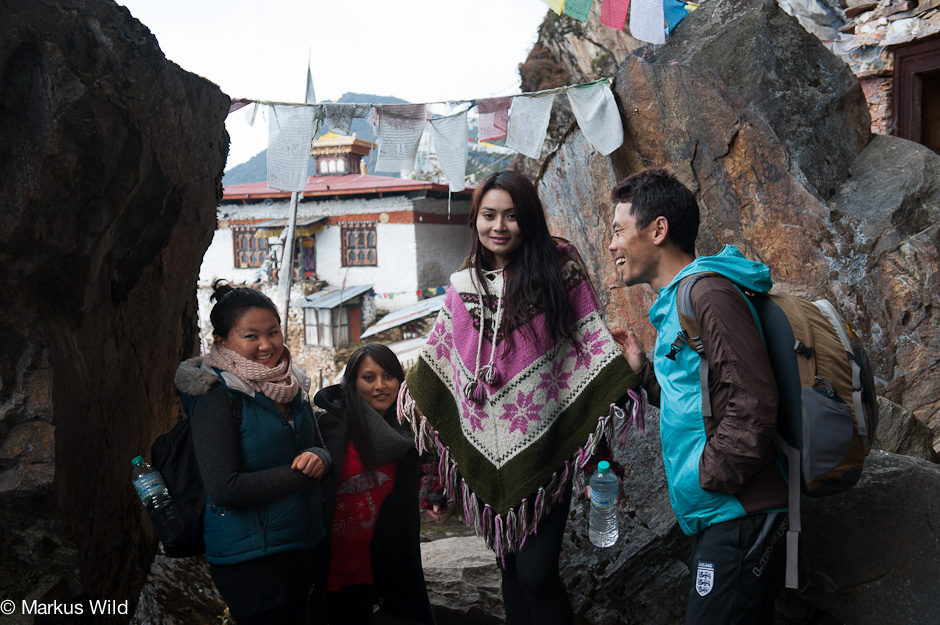
My young friends reaching the highest point of the monastic complex of Phajoding (on 3900 meters above sea level).
The world as it looked at me when I stepped out of my door this morning
(in Thimphu, Bhutan)



















































